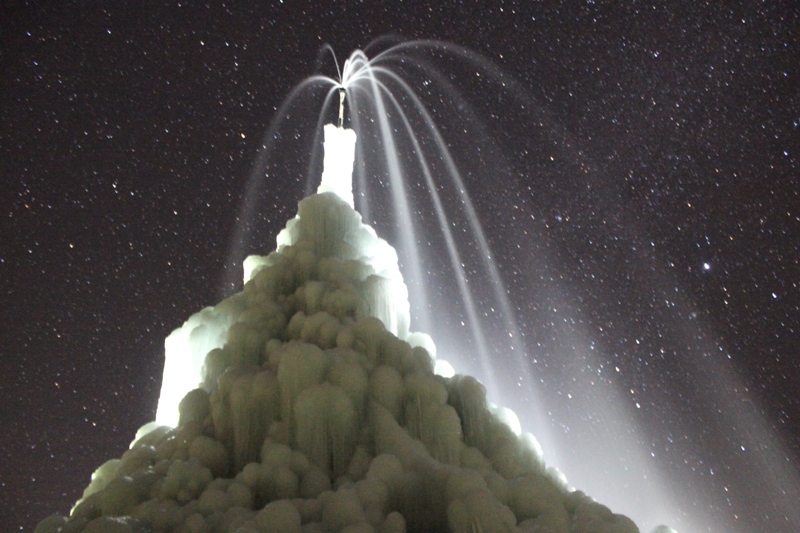- Better Society -
- 3mins -
- 962 views
Ice towers in the desert: the artificial glaciers of Ladakh
To solve water problems in a cold desert, an Indian engineer came up with an award-winning idea: freeze millions of litres of water into ‘ice stupas’.
Vertical glaciers called ‘ice stupas’ are overcoming water shortages for Himalayan farmers
Indian engineer Sonam Wangchuk is helping farmers in the arid Himalayan highlands of Ladakh to overcome water shortages by tapping meltwaters to build giant artificial glaciers called ‘ice stupas’.
The prototype lasted until July, supplying 1.5 million litres of meltwater to 5,000 saplings
In spring, farmers who live at 3,500 m in the trans-Himalayan mountains of Ladakh face acute water shortages. Ladakhi engineer Sonam Wangchuk’s ingenious solution is to freeze glacial meltwater into towering conical mounds resembling Tibetan religious stupas. These ice stupas behave like mini-glaciers, slowly releasing irrigation water for the growing season.
Wangchuk’s design builds on the experimental work of fellow Ladakhi engineer Chewang Norphel, who created flat artificial glaciers. Wangchuk realised, however, that a workable structure must have a minimal surface area to provide protection from the sun, especially at lower altitudes. Thanks to this design, ice stupas melt at a slower rate than flat ice.
The 2015 prototype, the result of a crowdfunding campaign that paid for a 2.3 km (1.43 mile) pipeline to direct glacial streams down to the village desert, lasted until early July, supplying 1.5 million litres (400,000 gals) of meltwater to 5,000 saplings planted by locals.
Source: RolexAwards

What is an ‘Ice Stupa’ and how does it work?
“I saw the problems these people were facing. The artificial glaciers were built at a very high altitude and villagers or workers were reluctant to climb so high. I wondered why we couldn’t construct glaciers right there in the village. The temperature is low enough to keep the water frozen – we just needed a smart way to make these glaciers,” says Wangchuk.
“I observed that for the spring sun and winds to melt the ice, they needed large surface areas. So if we reduced the area exposed to the sun and wind, then the ice could be stored in the village itself, thus eliminating the need for villagers to climb the mountains,” Wangchuk told Shreya Pareek, for The Better India.
So instead he came up with the idea of constructing cones of ice vertically towards the sun, thus there will be considerably less surface area exposed to the sun and it will melt slower.
“For example, one ice stupa of 40 m height and 20 m radius would store roughly sixteen million litres of water. If the same amount of water was frozen as a flat ice field 2 m thick, the area exposed to sun would be roughly five times more. Therefore, the sun and the warm spring winds would melt it roughly 5 times faster,” Wangchuk explains.
They named the project ‘Ice Stupa’ because the shape of the glacier resembled the traditional stupas, or Buddhist shrines, of Ladakh.
Watch below, a short film by Rolex about the project.
Source: TheBetterIndia


